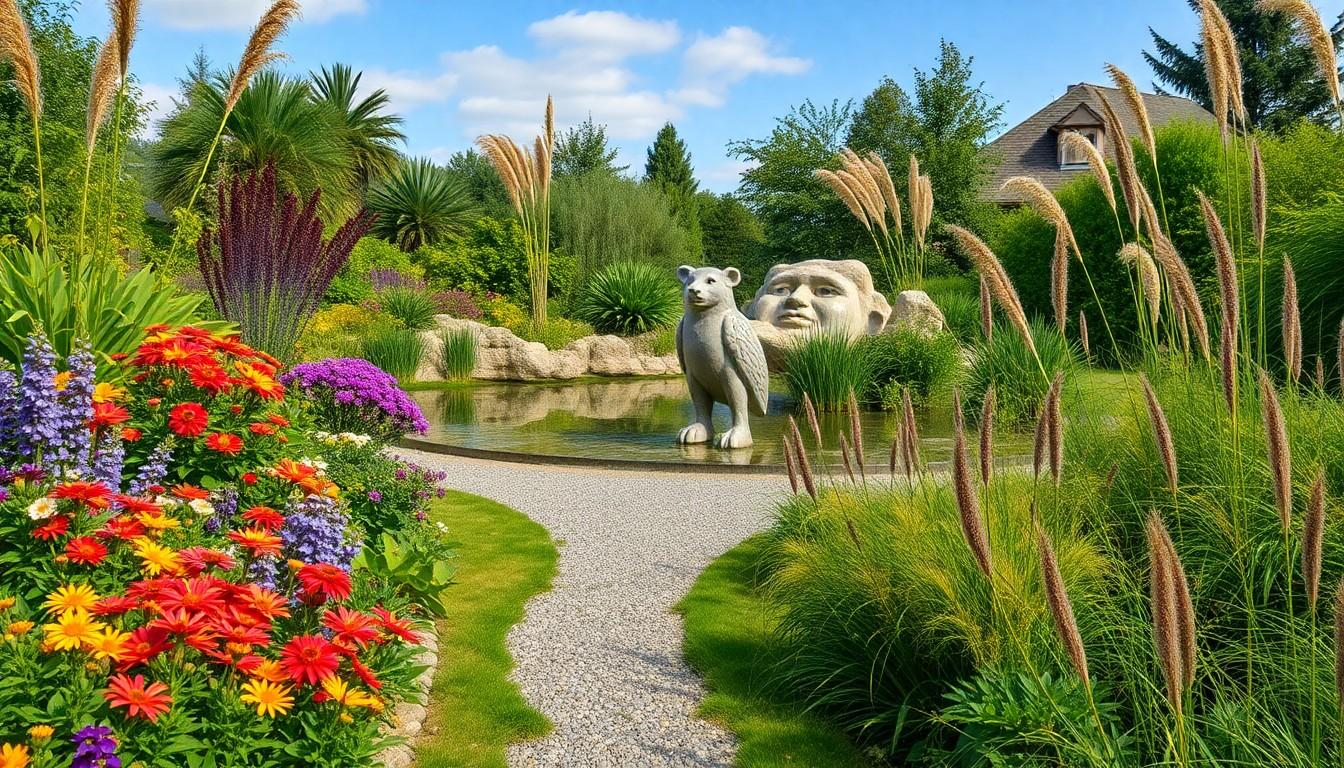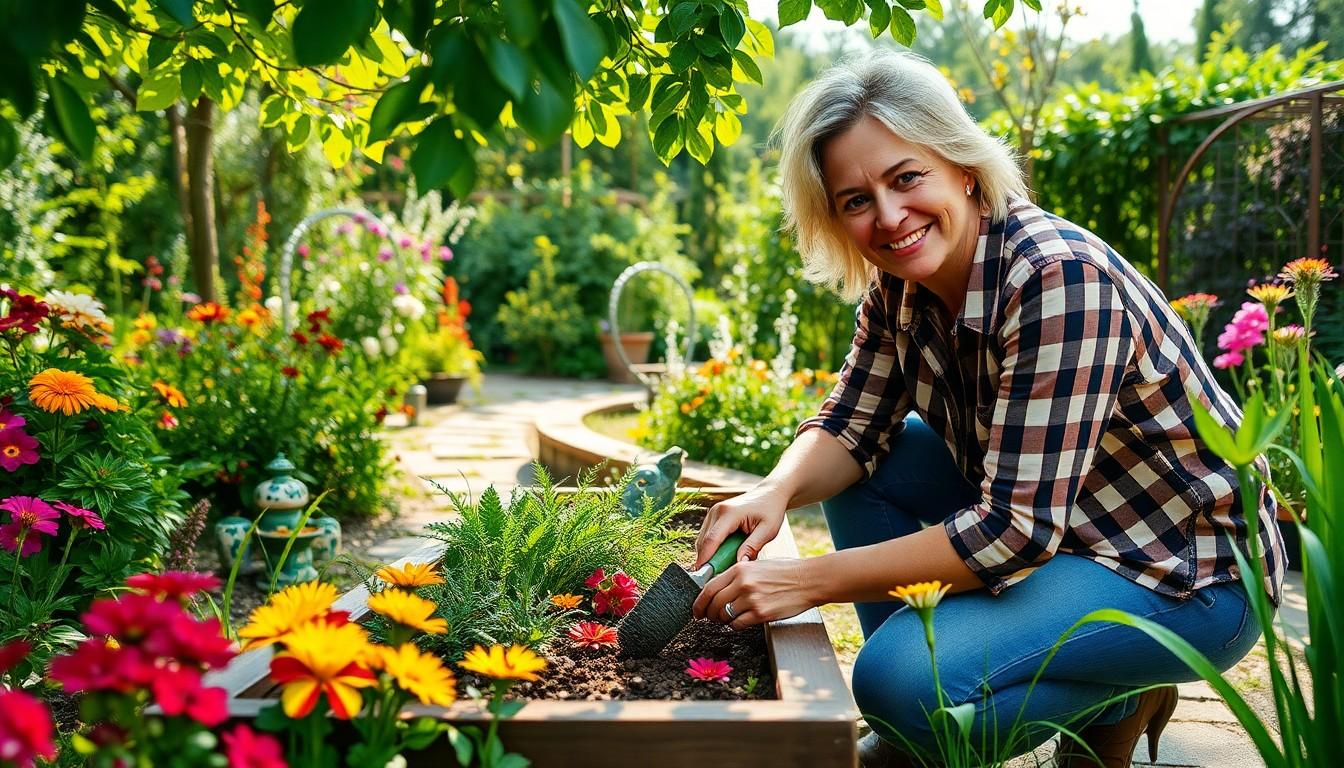Imagine stepping into a world where your backyard feels like an extension of your living room, complete with fresh air and the soothing sounds of nature. Garden style living isn’t just a trend; it’s a lifestyle choice that brings the beauty of the outdoors right to your doorstep. With a little creativity and a dash of greenery, anyone can transform their space into a personal oasis that even Mother Nature would envy.
From cozy nooks perfect for sipping coffee to vibrant flower beds that make your neighbors green with envy, garden style living invites you to embrace your inner horticulturist. It’s not just about aesthetics; it’s about creating a sanctuary that nourishes the soul. So grab your gardening gloves and let’s dig into how to cultivate a space that’s as inviting as a warm hug on a chilly day.
Garden Style Living
Garden style living embodies a lifestyle that transforms outdoor spaces into extensions of the home. It emphasizes harmony between indoor and outdoor environments, creating areas where relaxation flourishes. By incorporating lush greenery and decorative elements, homeowners can craft serene retreats that invite peace and connection with nature.
Key aspects of garden style living include aesthetic appeal, emotional well-being, and environmental consciousness. Floral arrangements, vibrant foliage, and strategically placed seating create inviting atmospheres. Elements such as pathways, water features, and ambient lighting enhance both functionality and beauty, enriching the overall experience.
This style allows for customization based on personal taste and local climate. Homeowners can choose low-maintenance plants, sustainable materials, or eclectic decorations to suit their lifestyles. Engaging in gardening fosters a sense of accomplishment and provides avenues for creativity.
Community engagement, workshops, or social events often accompany garden style living initiatives. These opportunities not only provide knowledge but also foster connections among like-minded individuals. Thus, gardening becomes a collective pursuit that promotes shared interests and hobbies.
Living in harmony with nature stands central to garden style living. Prioritizing native plants or organic gardening practices supports local ecosystems while reducing environmental impact. Each garden represents a unique expression of its creator, reflecting personal values and artistic visions.
Key Elements of Garden Style Living

Creating an inviting outdoor space requires attention to various elements that contribute to garden style living. This lifestyle embraces landscaping techniques and thoughtful plant selection.
Landscaping Techniques
Incorporating specific landscaping techniques enhances the overall appearance of outdoor spaces. Employing raised beds promotes efficient gardening and adds visual interest. Utilizing gravel pathways provides accessibility while defining areas within the garden. Adding focal points like sculptures or benches can draw the eye and encourage relaxation. Layering different heights in planting designs creates depth and dimension. Incorporating water features, such as ponds or fountains, adds tranquility and attracts beneficial wildlife. Emphasizing sustainability by using native plants reduces water usage and upkeep. Customizing these techniques allows each garden to reflect personal style and local climate.
Plant Selection
Selecting the right plants plays a crucial role in achieving garden style living. Opting for a mix of perennials and annuals ensures year-round color and variety. Native species often require less maintenance and thrive in specific climates. Incorporating fragrant herbs can enhance sensory experiences while serving practical purposes. Focusing on low-maintenance plants, like succulents or ornamental grasses, eases upkeep for busy homeowners. Designing with seasonal blooms ensures visual interest throughout the year, appealing to different senses. Prioritizing biodiversity not only supports local ecosystems but also enriches the overall garden atmosphere. This thoughtful approach to plant selection nurtures beauty and sustainability in outdoor spaces.
Design Inspirations and Ideas
Incorporating garden style living allows for creative expressions in both indoor and outdoor spaces. Here are some fresh ideas to enhance those environments.
Indoor Garden Spaces
Indoor gardens promote tranquility and connection to nature, improving well-being. Utilize window sills to create a small herb garden, providing fresh ingredients for cooking. Vertical planters optimize space while showcasing a variety of greenery, from ferns to succulents. Choose low-light plants like pothos or snake plants to thrive in darker areas, requiring minimal maintenance. Adding decorative pots enhances the overall aesthetic, aligning with personal design tastes. Indoor water features such as small fountains introduce calming sounds, enriching the atmosphere.
Outdoor Retreats
Outdoor retreats extend living spaces and create serene environments. Incorporate comfortable seating areas surrounded by lush plants to encourage relaxation. Use natural materials like stone for pathways, blending seamlessly with garden elements. Flower beds filled with perennial plants ensure vibrant colors throughout the seasons, attracting beneficial pollinators. Consider installing a pergola adorned with climbing vines for added shade while hosting outdoor gatherings. Fire pits enhance evening enjoyment, fostering warmth and ambiance as stars twinkle overhead. Embracing these elements cultivates a sanctuary that promotes peace and connection with nature.
Benefits of Garden Style Living
Garden style living offers numerous advantages, enhancing both personal spaces and overall lifestyles. This approach fosters a connection to nature, promoting emotional and environmental well-being.
Environmental Impact
Garden style living significantly supports local ecosystems. Creating lush green areas attracts beneficial wildlife, including pollinators like bees and butterflies. Sustainable gardening practices, such as using native plants, reduce water usage while minimizing the need for chemical fertilizers. Composting organic waste enriches soil health, further promoting biodiversity. Additionally, well-designed outdoor spaces can improve air quality and reduce urban heat, benefiting surrounding environments. Engaging in gardening initiatives also cultivates awareness about environmental conservation.
Psychological Well-Being
Garden style living positively influences psychological health. Spending time outdoors enhances mood and reduces stress. Nature exposure leads to increased feelings of tranquility and satisfaction. Gardening activities, like tending to plants or enjoying the fruits of one’s labor, foster a sense of accomplishment. Inviting spaces filled with greenery promote mindfulness and relaxation. Connecting with nature fosters creativity and provides an escape from daily pressures, enhancing overall mental well-being. Moreover, social interactions through gardening communities or workshops create support networks that bolster emotional resilience.
Challenges to Consider
Garden style living offers numerous benefits, but it also presents challenges that homeowners should address. Understanding these challenges ensures a successful gardening experience.
Maintenance Requirements
Maintenance demands vary based on plant selection and landscaping choices. Regular watering, weeding, and pruning constitute essential tasks for garden upkeep. Choosing low-maintenance plants, such as succulents and native species, reduces effort while maintaining aesthetics. Organic practices, such as mulching and composting, enhance soil health and minimize time spent on maintenance. Implementing automated irrigation systems simplifies watering routines. Seasonal preparation, including fall cleanup and spring planting, requires planning to ensure year-round beauty. Gardeners should allocate time to manage these tasks to sustain a thriving outdoor environment.
Climate Adaptations
Climate plays a crucial role in garden style living, influencing plant selection and design. Understanding local weather patterns enables better plant choices and landscaping decisions. For instance, homeowners in hot, dry climates benefit from drought-resistant species and xeriscaping techniques. Those in colder regions should focus on hardy plants, ensuring their gardens withstand harsh winters. Microclimates within a garden, created by structures or terrain, also impact plant growth. Employing shade cloth, windbreaks, or greenhouses can help protect sensitive plants from extreme conditions. Adapting designs and plant choices to suit local climates fosters healthy, vibrant gardens.
Enhance Beauty and Well-being
Embracing garden style living transforms outdoor spaces into serene retreats that enhance both beauty and well-being. By cultivating inviting environments filled with lush greenery and thoughtful design, individuals can create personal oases that reflect their values and tastes. This lifestyle not only nurtures a connection to nature but also promotes emotional resilience and community engagement.
As homeowners explore the joys of gardening, they’ll discover the satisfaction of nurturing life while supporting local ecosystems. With the right approach to plant selection and maintenance, anyone can enjoy the numerous benefits of this enriching lifestyle. Ultimately, garden style living offers a pathway to tranquility, creativity, and a deeper bond with the natural world.

